COTTLE “民藝思想の服づくり” / COTTLE — On the Mingei Philosophy in Clothing
2025.4.23
今日は、COTTLEについて紹介をさせて頂きます。
COTTLEではブランドのオフィシャルページに様々に詳細が記載されており、よく見れば見るほどに感激しますので、そちらもご覧頂けたら良いと思います。
<COTTLE ブランドウェブサイト>
重複する内容はあると思いますが、このshop talkでは僕なりに紹介をさせて頂きたいと思います。
まず、ブランドが拠点とするのは、岡山県倉敷市児島という地域。
世界的にデニムの聖地と言われる場所。
昔からワークウェアや学生服を生産する地であったが、時代の流れとともに、その産業が衰退。
しかし、それまでのノウハウを持って、1960年代より再び立ち上がった人々により、デニムウェアの製作が始まり、現在でも世界的な産地として息づいている街である。
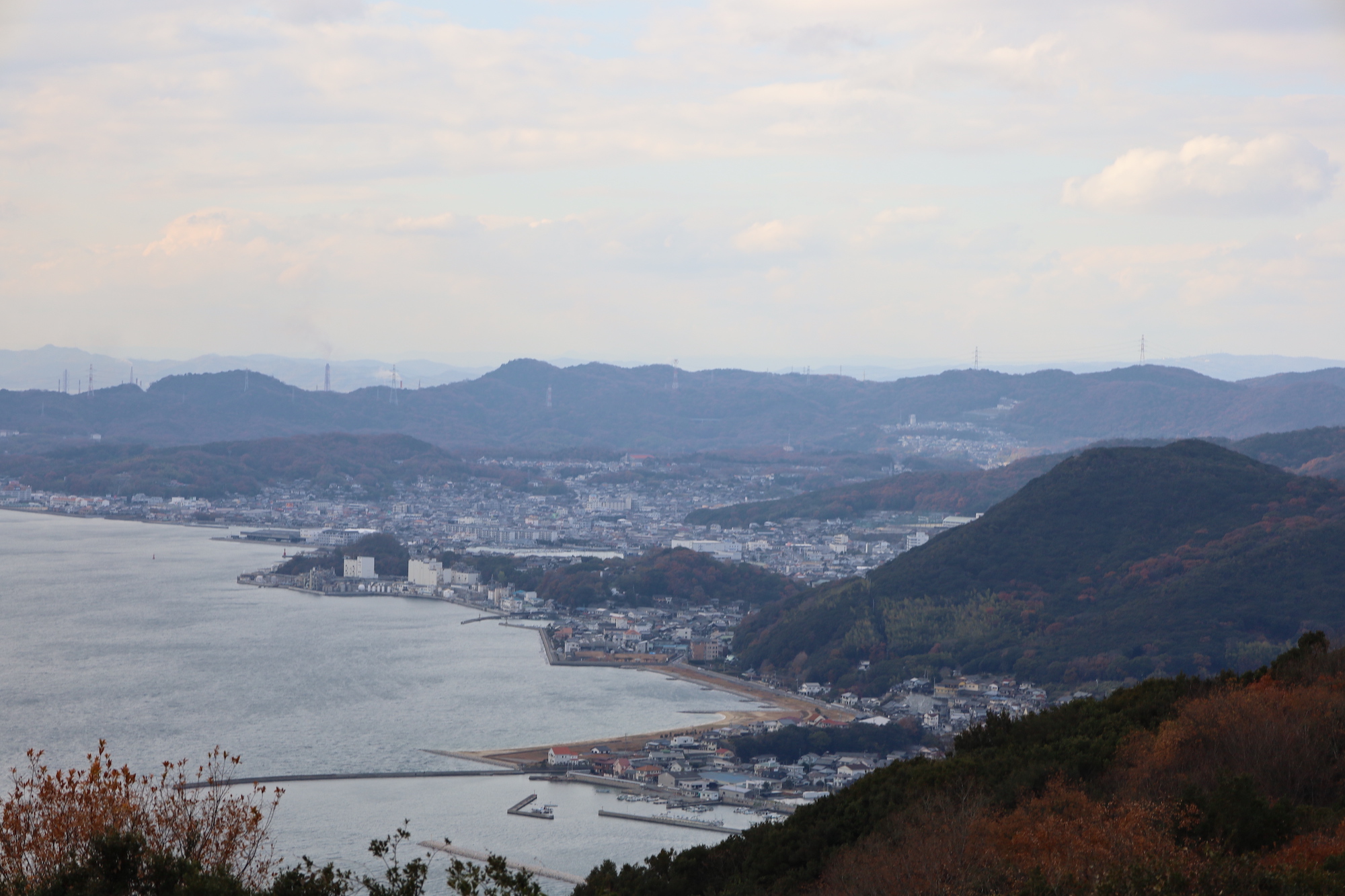
COTTLEのアトリエ近くにある、王子が岳から撮影した児島地域。
街のあちこちに工場があり、外から見ると一般の住宅のようであっても、そこが工場であることも当たり前なほど。
織り、染め、縫製、洗い、仕上げ、、、などなど、洋服生産に関わるたくさんの工場が存在する。
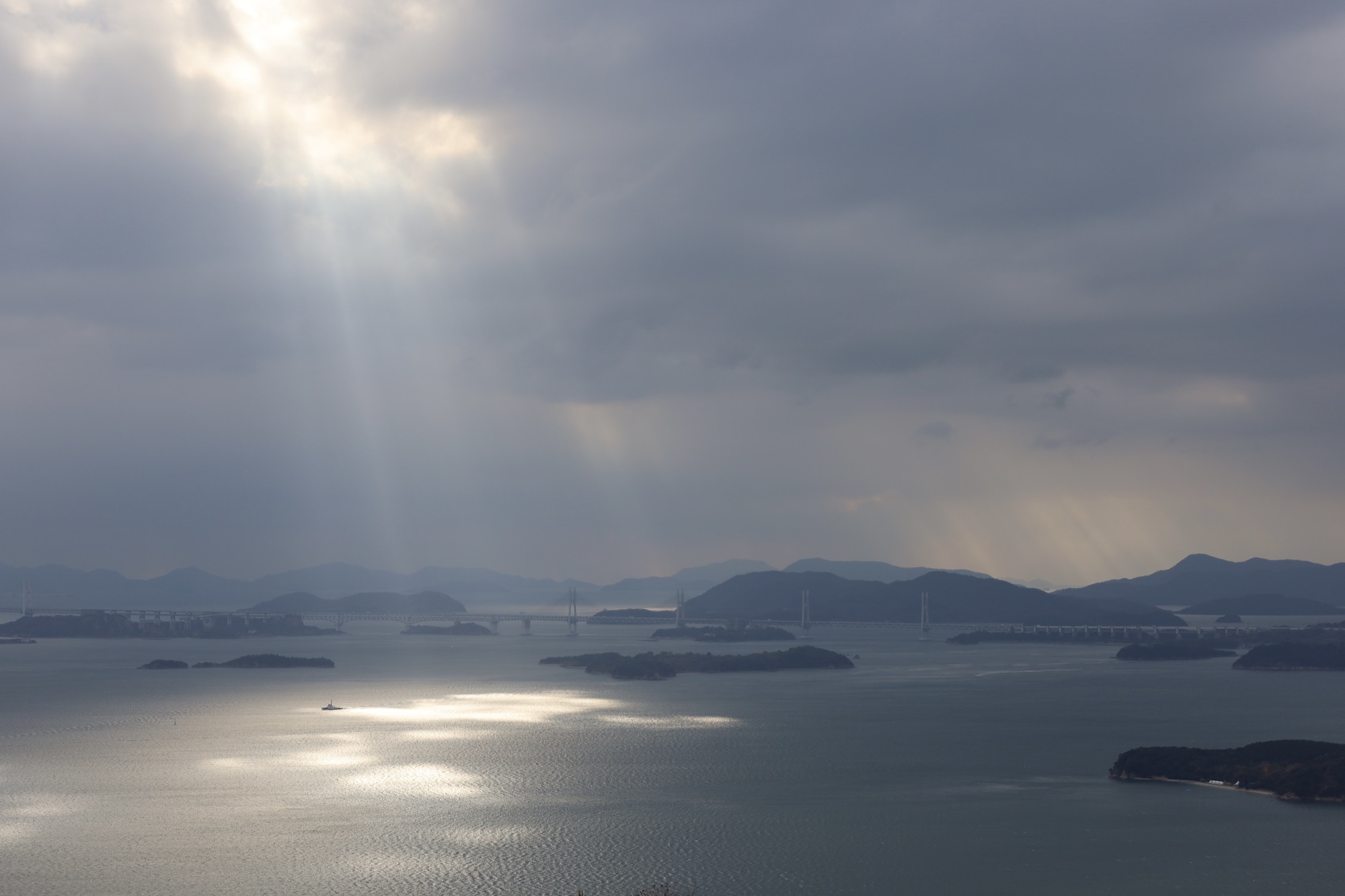
奥に写るのが瀬戸大橋。
瀬戸内海にも面する地域で、山と海のどちらもが近い。

山からは、王子が岳のシンボルであるニコニコ岩が海を見下ろす。
景観が良く、ものづくりを行なう上では、とても良い地域である倉敷市児島。
僕自身も、過去に児島の縫製の現場に勤めていたことがあり、実際に住んでいた街である。
その頃には、デニム製品の特殊ミシン(カンドメやボタンホール、リベット、ベルトループ付けなど)や、一日中アイロンをしていたり、夜になると研修生が使っていないユニオンスペシャルの巻き縫いミシンで、ジーンズの尻グリや、バックヨークの巻き縫いをひたすら練習していました。。。
そんなことはさておき、、、
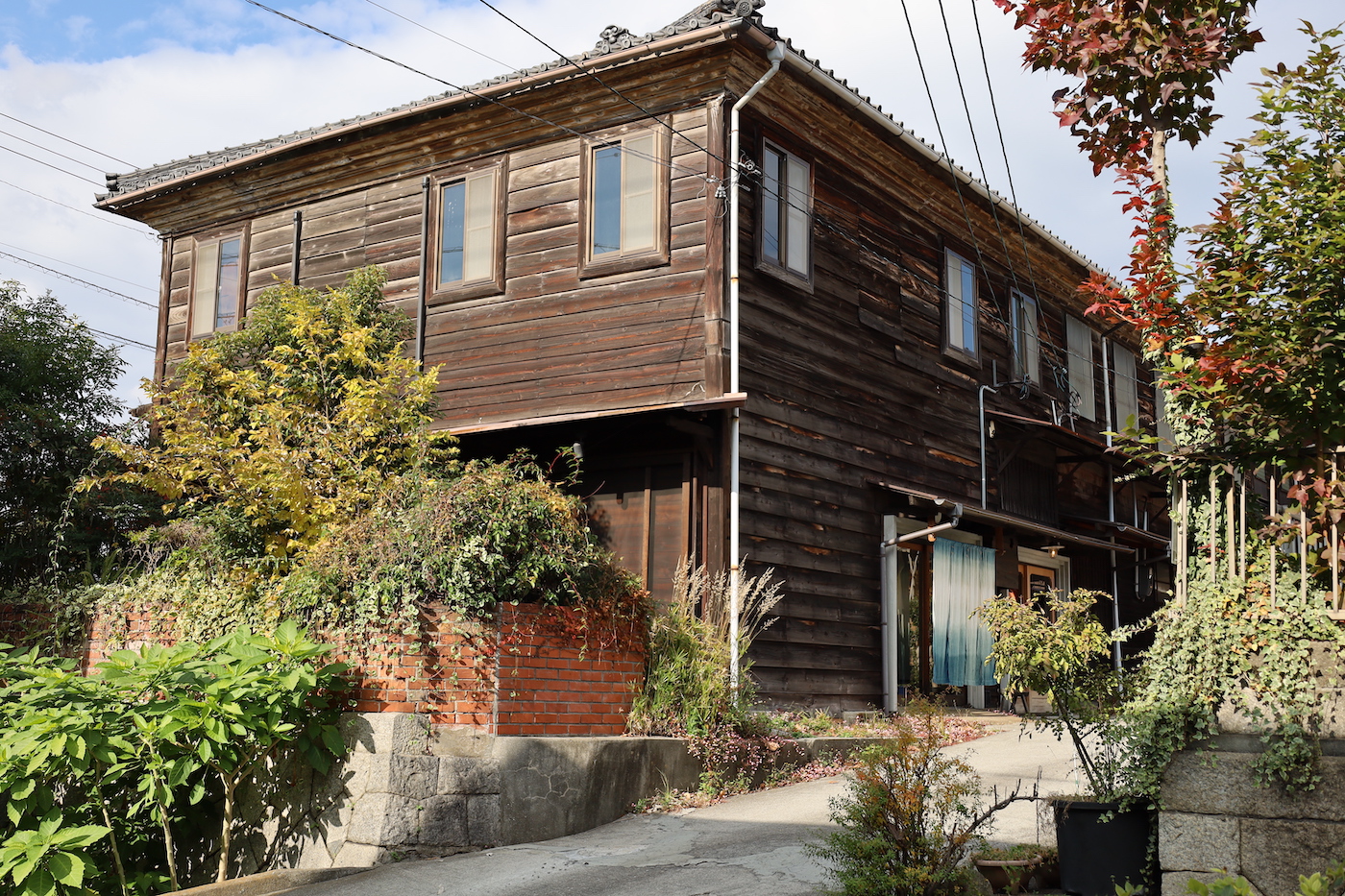
児島という街を拠点とし、とても素敵な建物をアトリエとするCOTTLE。
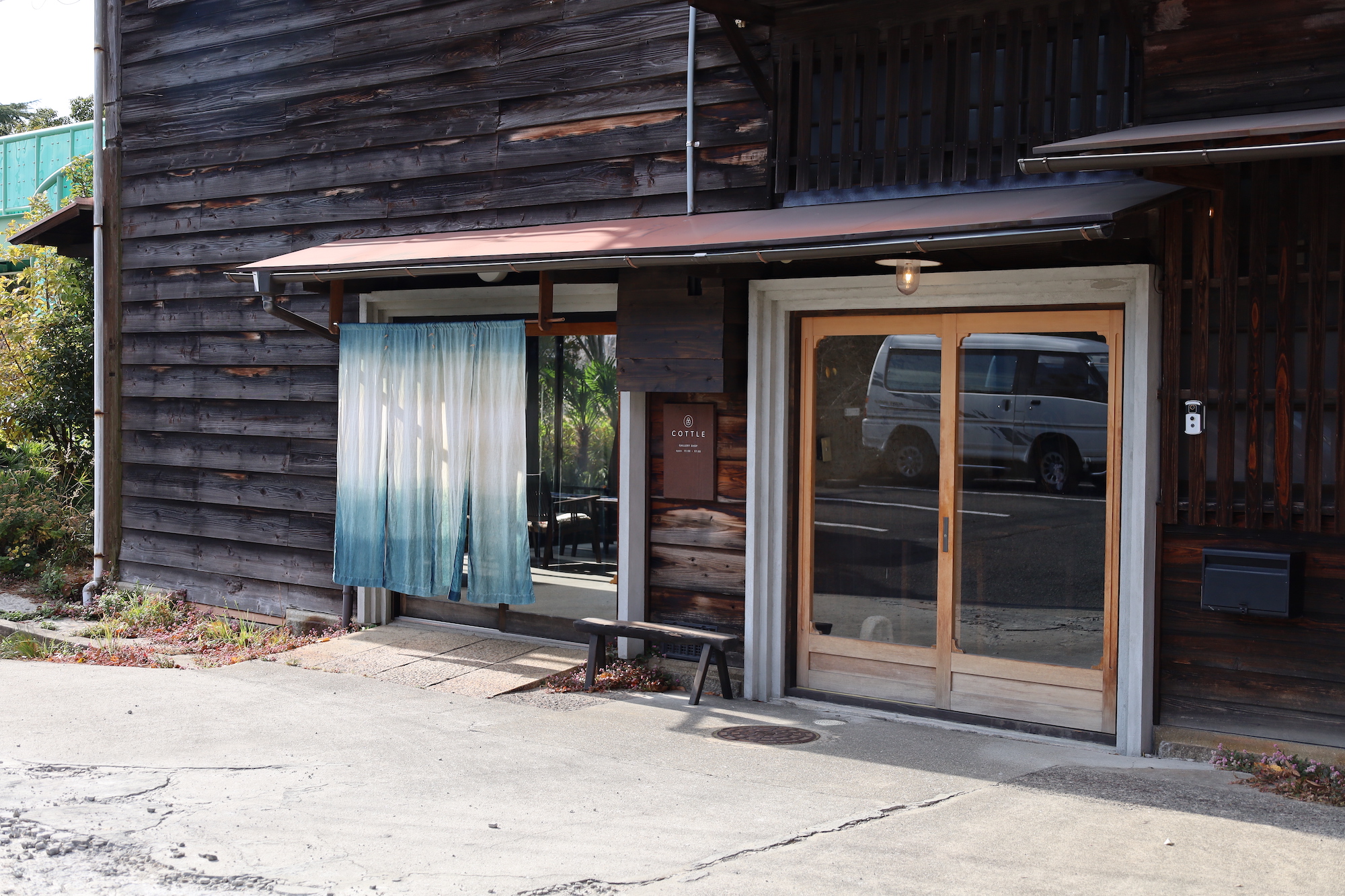
この場所には、アトリエとオフィスが同居し、ギャラリーショップが隣接するようになっている。
アトリエというのは、COTTLEの場合には、言い方を変えると自社の縫製工場でもあり、デザイナーの渡辺さんの頭の中にあること、日々感じていることを一つの空間で濃度を下げることなく、すぐに形にすることができる。
それはとても大きなことである。
洋服づくりを進め、企画し、生産していく中で、当初考えていたプロセスよりも一層適した方法が見つかることや、反対に改善すべき点が生まれることがある。
そのような場合でも、すぐに自分たちでより良い方法に変更をしたり、修正をすることができる。
これは、常に手の行き届いたもの、考えの行き届いた洋服をつくるためには、利点となることである。
真にレベルの高いものづくりは、決して簡単なことではないのは、容易く想像できると思いますが、それを貫き、一着一着のコレクションに磨きをかけ続けているブランドである。

そして、ギャラリーショップを隣接することで、ものづくりを自分たちでも伝えられるようにしている。
普段は、アポイント制として運営しているそうだが、毎週にわたって定期的に日本国内だけではなく、海外からもファンが訪れているようである。
僕自身も、COTTLEのもとを訪れた外国人の方と、何度かお会いしたことがあり、皆さんブランドのものづくりに感銘を受けていることを感じました。
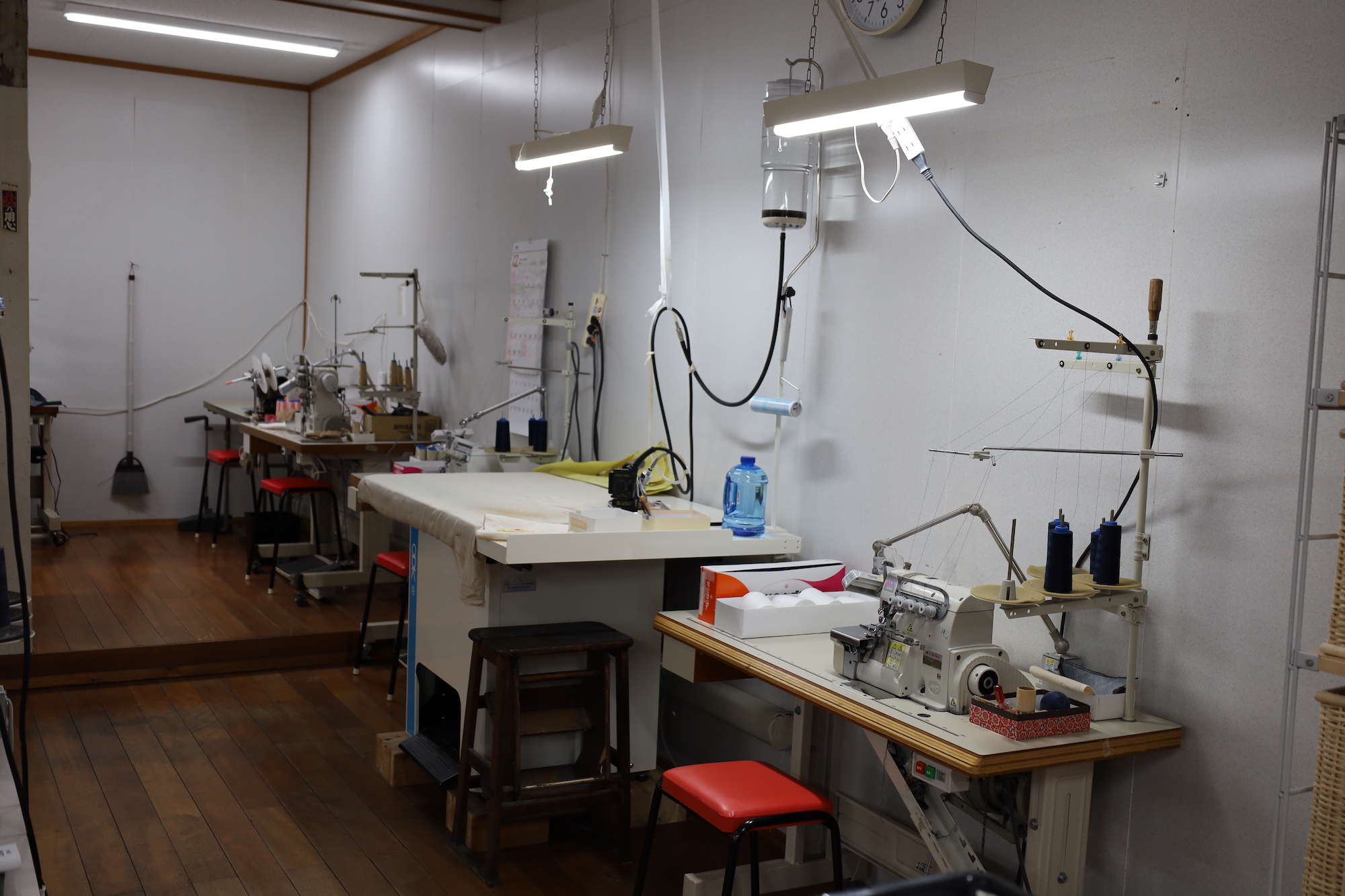

自社縫製工場として運営されるCOTTLEのアトリエ。
デザイナーである渡辺さんと、奥さんの由香里さん以外に、5名の技術者さんがアトリエに在籍している。
またそれ以外にも、児島をはじめ、全国にCOTTLEの思想を理解する高い技術を持つ職人たちが一緒にものづくりを進めている。
洋服ブランドは、外部の関係工場に裁断や縫製を依頼することが通常ですが、COTTLEでは自分たちで生産を行なうことが特徴的。
このように自社で縫製できる環境をつくり、それを整えることは、実現が非常に難しいことである。
しかし、COTTLEでは、ブランドの礎となる思想と、自らのすべきことを考え、上記のような方式を貫いている。
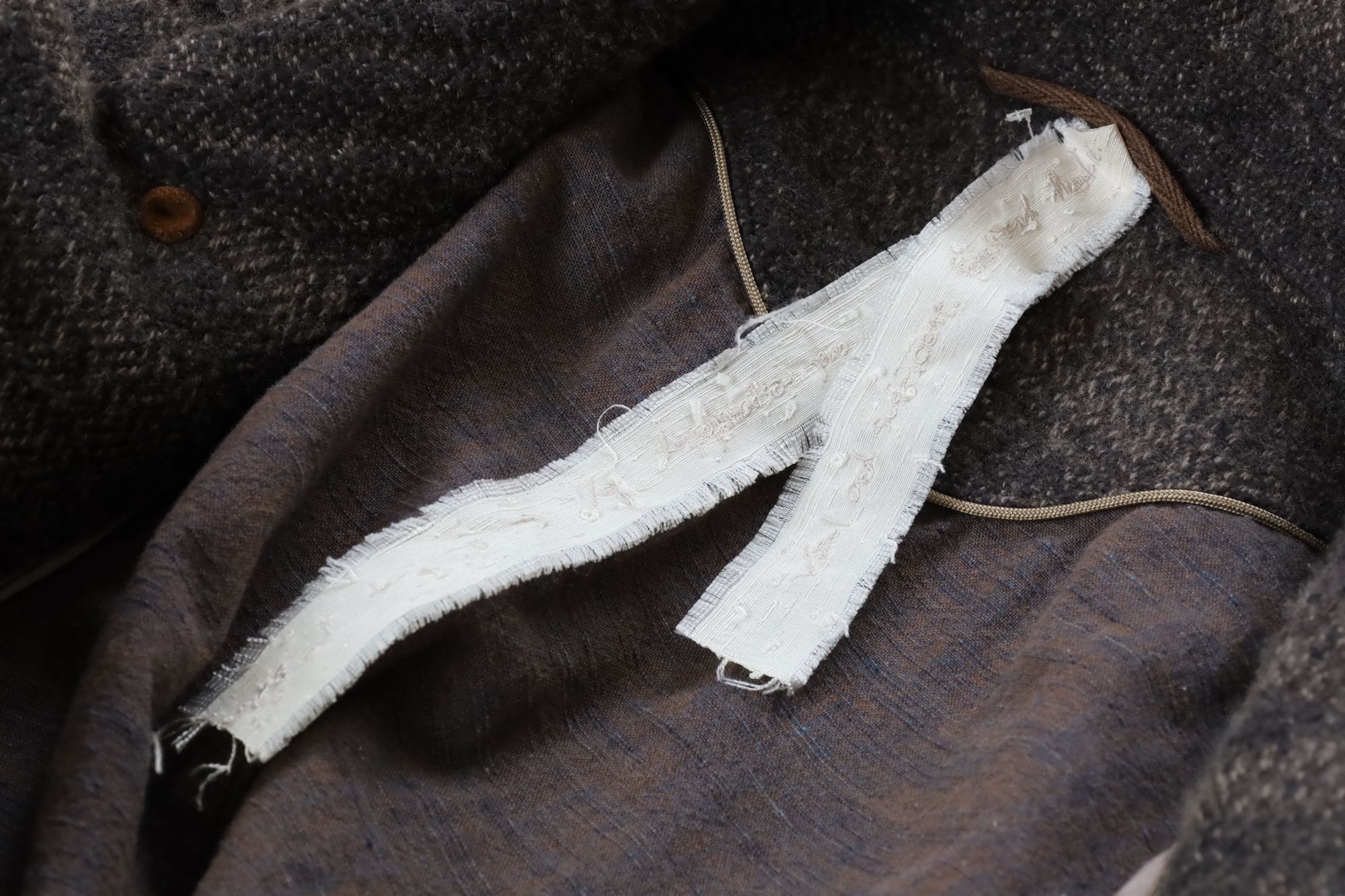
そのCOTTLEの礎となる考え。
それが”民藝”の精神である。
例えば、そのことを表現している一つの要素が、上の写真にある洋服に付属するブランドのネームタグ。
コレクションによって三種類ほどのものが使い分けられますが、これはその一つのもの。
よく見ると、ピョンピョンと糸が飛び出ている箇所があります。
これは、昔の漁師が使い古して使わなくなった魚網を紡ぎ直し、緯糸として織り込んだ”幻の織物”とも言われる”ヒゲつむぎ”を踏襲したもの。
そして、加えてそこには、いくつかの文字が記載されている。
これはCOTTLEのアトリエがある倉敷市には、倉敷民藝館という施設がある。
その創設者で初代館長の外村吉之介が説いた民藝の精神。
「健康で、無駄がなく、真面目で、威張らない。」
「ものづくりに知恵と責任を。」
という言葉。
その民藝思想を踏襲した織りネームである。
それだけでなく、COTTLEの洋服からは、その精神性が隅々から感じられます。
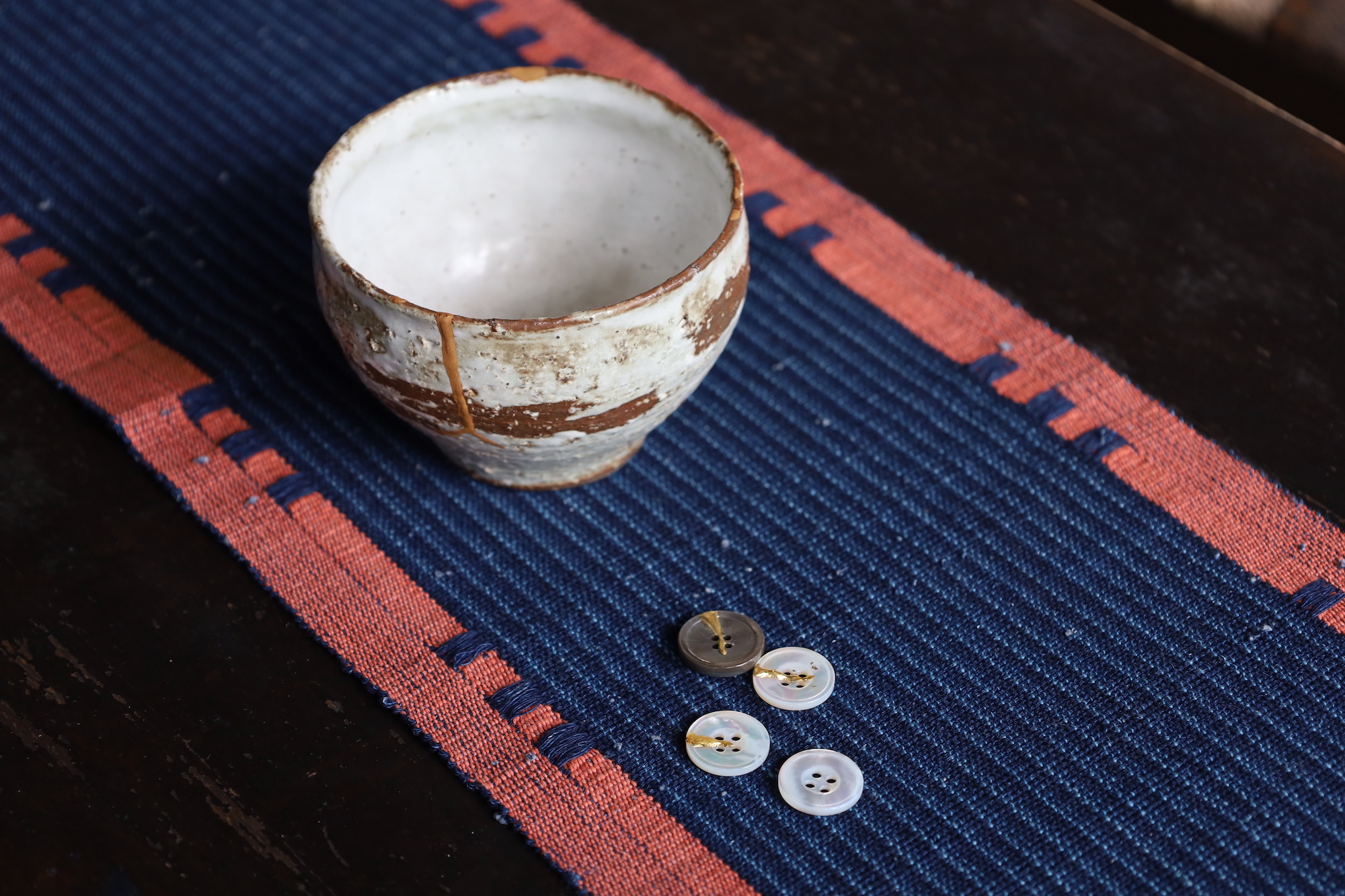
民藝品の美しさは、”用の美”と言われる。
用途に結び付いた工芸品であり、日々の暮らしの中で使われてこそ、磨かれていくものであるという。
その”用の美”をCOTTLEの精神として反映させたものづくり。
日本の古来からの手法で、”金継ぎ”というものがある。
使用することで欠けたり、ヒビが入った陶磁器を漆で補修し、その箇所を金粉で装飾するという修復技法。
これは、壊れたものを活かして、そこに新たな価値を見出し、使い続けられるようにする考え方。
その金継ぎを継承したボタンを象徴的に付けている。
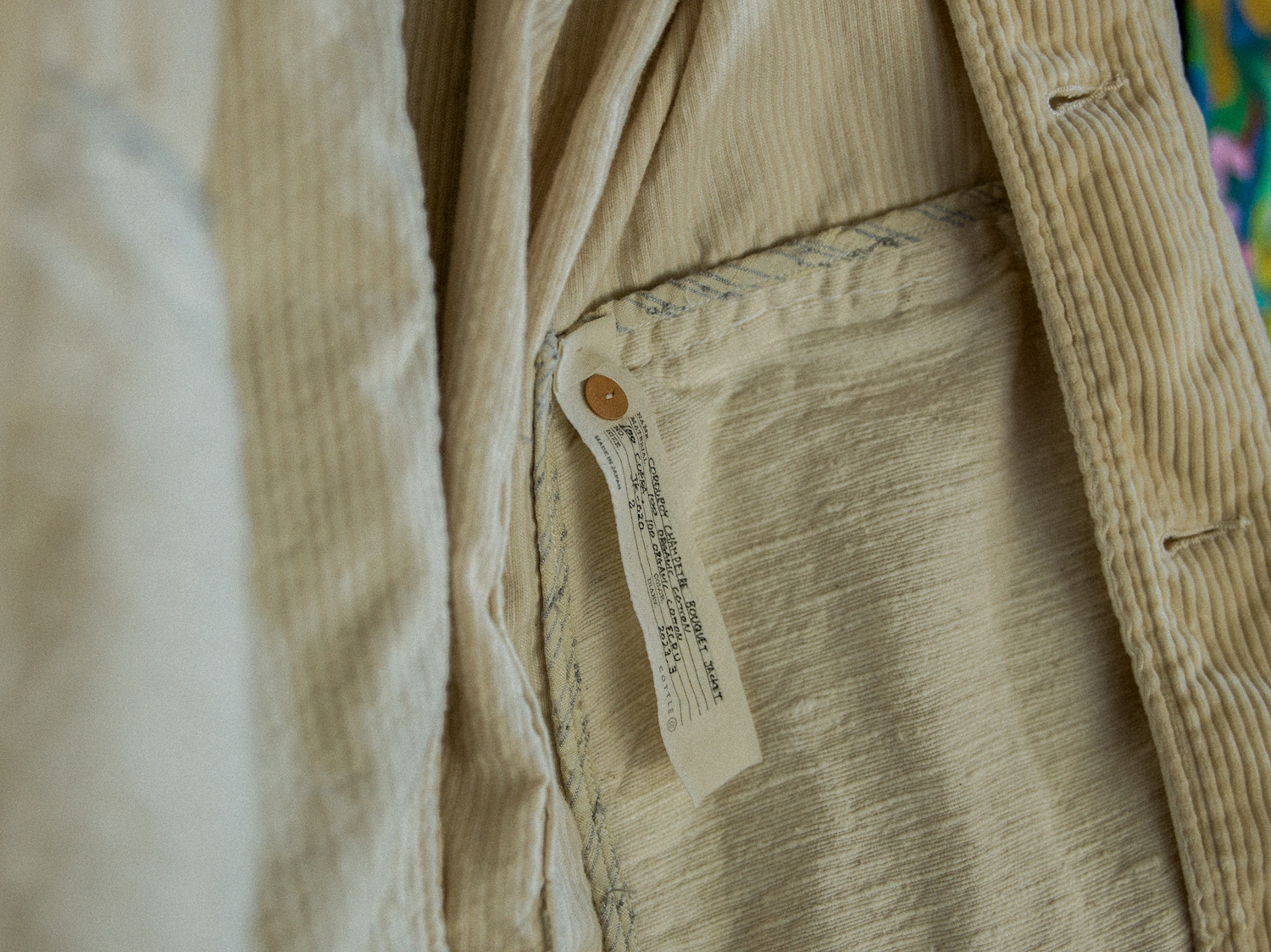
洋服内部の構造や、フォルムの保形、耐久性を高めるための必要な箇所には、先ほど紹介した”ヒゲつむぎ”や”絣生地”を採用し、実際にご覧頂くと、内側からもブランドの思想が感じられると思います。
また、それだけではなく付属する手書きのタグには、洋服の混率やサイズなどの詳細のみならず、生産年月の記述もあり、このことからもCOTTLEで生産する一着一着の洋服への意志や、濃度を見ることができる。
後日、掲載をしていきますが、ブランドでつくる生地や洋服構造においても同様。
年月を経てもなお、日々使い続けたくなるCOTTLEの”用の美”が実現されています。
このことは、精神的な側面だけではなく、物理的にも日本の高い技術を持つ職人たちと共に、非常に考え抜かれたものであると、僕自身もCOTTLEの洋服を着ていく中で実感してきました。
アパレル市場を見ていると多様な服が存在し、溢れ、圧倒的な供給過多であることは誰もが知っている事実。
ただし、その中でも、価値あるものは知られ、継承されるべきであると僕は思います。
COTTLEは、過剰に生産を行なうのではなく、日本国内においては、大半が既製服の展開ではありません。
必要としてくれる方に、必要な分だけを届けたい。という考え方により、受注生産方式での展開としています。
その分、COTTLEのアトリエでつくられる洋服は、”思想”や”手”が細かく行き届き、それが圧倒的な高濃度で洋服に投影されていると思います。
“真面目で、威張らない”という言葉は、日々の生活の中で、ふと立ち止まった時に、心に深く沁み入るものに僕は感じます。
そして、その言葉の通り、着実で、真剣に向き合われるものづくり。
実際に出来上がった洋服からも感じるし、アトリエを訪れる度に、ヒシヒシとそのことが感じられる。
そのようなCOTTLEの洋服は、素晴らしいものであり、少しでも多くの方に知ってもらうべきものであると僕は常々思っています。
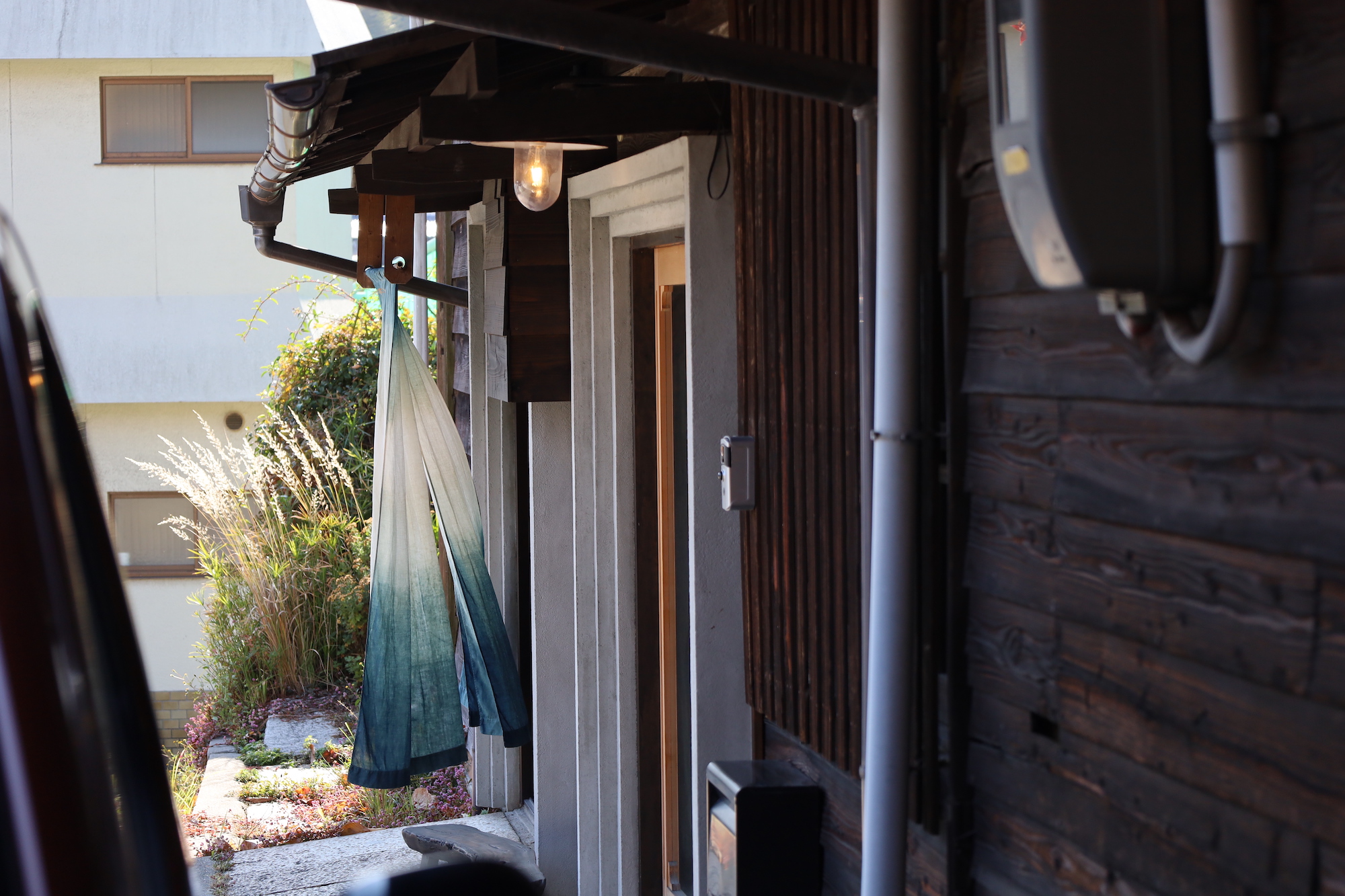
これまで僕自身もCOTTLEのオーダー形式のイベントを期間限定で、過去3年間行なってきました。
今回は、ブランドの拠点となる児島のギャラリーショップで行います。
実際に生産を行なうアトリエと併設をされるギャラリーショップであり、COTTLEの思想が最もダイレクトに感じてもらえる場所だと思います。
期間は、5月3日(土)〜5月11日(日)となります。
日頃、ギャラリーショップはアポイント制で運営をしていますが、今回の期間中は、事前のご予約は必要なく、どなた様でもお越し頂ける期間と致します。
期間中は、COTTLE 渡辺さんと僕とで、皆様をお待ちしております。
コレクションについては、また追って順番に紹介を致します。
LE BERGER / Herd Limited.
shop talk & communications by Akihiko Fukuda
__________
The English translation is as follows:
Today, I would like to introduce COTTLE.
COTTLE’s official website contains a wealth of detailed information, and the more you read, the more deeply moving it becomes—so I highly recommend taking a look.
< COTTLE Official Website >
https://cottle.jp/
While there may be some overlap, I would like to introduce the brand from my own perspective here in this “shop talk.”
The brand is based in Kojima, Kurashiki City, Okayama Prefecture—a region globally known as a sacred ground for denim.
Historically, it was a hub for producing workwear and school uniforms. However, with the changing times, these industries began to decline.
Yet, utilizing the accumulated know-how, a new generation rose in the 1960s to revive local craftsmanship through denim production, and to this day, Kojima continues to thrive as a world-renowned production region.
This is a view of the Kojima area, taken from Mt. Ojigadake, located near COTTLE’s atelier.
Throughout the town, factories are scattered everywhere—so much so that it’s common for what appears to be an ordinary house from the outside to actually be a working factory.
Weaving, dyeing, sewing, washing, finishing… a wide array of factories involved in every step of garment production exists here.
From the mountain, the town is watched over by “Nikoniko Iwa” (Smiling Rock), a symbol of Mt. Ojigadake, overlooking the sea.
With its beautiful landscape, Kurashiki City’s Kojima area is truly an ideal environment for craftsmanship.
I myself once worked in a sewing factory in Kojima and actually lived in the town.
Back then, I spent my days working with special denim machines—bar tackers, buttonhole machines, rivet setters, belt loop attachers—and spent entire days on the ironing table. In the evenings, I would practice over and over on unused Union Special machines, stitching back yokes and seat seams on jeans using lap seams…
But—putting that aside for now…
COTTLE is based in the town of Kojima, where they have established their atelier in a truly beautiful building.
This space houses both the atelier and the office, with an adjoining gallery shop.
In COTTLE’s case, the atelier also functions as its own sewing factory. This setup allows designer Mr. Watanabe to immediately bring to life what exists in his mind or what he feels on a daily basis, without diluting the essence of his vision within a single, cohesive space.
That is a significant advantage.
In the process of designing and producing garments, there are often moments when a method better suited than the originally planned one is discovered, or when points for improvement emerge.
In such cases, they are able to immediately implement changes or make adjustments in-house to pursue a better solution.
This becomes a major strength when striving to create garments that are truly well-considered and refined.
While it’s easy to imagine how difficult it is to maintain such a high standard of craftsmanship, COTTLE is a brand that remains committed to it—constantly polishing each piece in their collection.
By adjoining the gallery shop to their atelier, COTTLE has created a space where they can directly communicate their craftsmanship themselves.
While the shop usually operates by appointment, it is regularly visited not only by people from across Japan but also by fans from overseas.
I myself have had the opportunity to meet some of the international visitors who came to see COTTLE, and each time, I could truly sense how deeply moved they were by the brand’s approach to making things.
COTTLE’s atelier functions as an in-house sewing factory.
In addition to the designer Watanabe-san and his wife Yukari-san, five skilled technicians work regularly in the atelier.
Beyond that, highly experienced craftspeople who share COTTLE’s philosophy—both in Kojima and across Japan—collaborate in the making of each piece.
While it’s common for fashion brands to outsource cutting and sewing to external factories, what makes COTTLE truly unique is their commitment to handling production themselves.
Building and maintaining an environment where garments can be sewn in-house is no easy feat.
Yet COTTLE remains steadfast in this approach, grounded in a clear philosophy and a deep sense of purpose in their craft.
The foundational philosophy of COTTLE lies in the spirit of Mingei—the Japanese folk craft movement.
One clear example of this is found in the brand’s name tag, attached to each garment, as seen in the photo above.
While COTTLE uses about three different types of name tags depending on the collection, this particular one carries special meaning.
If you look closely, you’ll notice small threads popping out irregularly from the fabric.
This design pays homage to Hige Tsumugi, a “phantom textile” once woven from repurposed fishing nets that had been worn down by use and then re-spun, with the threads woven in as weft yarns.
Additionally, the tag is inscribed with a few key words.
These words refer to the founding philosophy of the Kurashiki Folk Craft Museum (Kurashiki Mingeikan), located in the same city as COTTLE’s atelier. The museum’s first director, Yoshinosuke Tonemura, outlined the core tenets of Mingei thought:
“Healthy, without waste, sincere, and never boastful.”
“Take responsibility in craftsmanship.”
The name tag is woven to reflect this Mingei philosophy—not just in aesthetics, but in meaning.
Beyond that, you can feel this spirit throughout every detail of COTTLE’s garments. It’s embedded deeply into their work—quiet, earnest, and intentional.
The beauty of mingei (folk craft) is often described as “beauty in utility” (yō no bi).
These are crafts deeply tied to function—meant to be used in everyday life, and through use, their beauty is revealed and refined over time.
COTTLE’s craftsmanship is rooted in this philosophy, expressing yō no bi as a central spirit of their work.
One traditional Japanese technique that embodies this idea is kintsugi—the art of repairing broken or cracked pottery with lacquer, then highlighting the repaired seams with gold powder.
It’s a restoration method that doesn’t hide flaws but embraces them—giving broken items new life, and recognizing their continued worth through thoughtful mending.
COTTLE reflects this philosophy symbolically by attaching buttons inspired by kintsugi—an homage to finding value in imperfection and continuity in repair.
In areas of the garment where structural integrity, form retention, and durability are essential, COTTLE incorporates materials such as the previously mentioned hige-tsumugi or kasuri fabrics. These details can be seen when viewing the garments up close, and they allow you to sense the brand’s philosophy even from within.
Furthermore, each piece comes with a handwritten tag—not only listing the fabric composition, size, and other specifications, but also the date of production. This detail reflects the deep care and intention embedded in every garment made by COTTLE.
This mindset is equally evident in the fabrics and garment constructions developed by the brand, which we’ll introduce in future posts.
COTTLE achieves a sense of “beauty in utility” that endures over time—garments you want to continue wearing for years to come. And this is not only a matter of spirit, but of material execution: each piece is created in close collaboration with highly skilled Japanese artisans and represents a thoughtfully crafted balance between functionality and beauty.
Looking at the broader apparel industry, it’s no secret that we’re in a time of excessive supply, where garments overflow in sheer volume and variety.
But even in such a context, I believe that truly valuable things should be recognized, and carried forward.
COTTLE does not pursue mass production. In fact, most of their garments are not produced as ready-to-wear collections in the domestic market. Instead, they operate on a made-to-order basis, delivering only what is necessary to those who need it.
Because of this approach, each garment produced in COTTLE’s atelier carries a dense concentration of thoughtfulness and craftsmanship—it becomes a projection of their values through their hands and their philosophy.
The phrase “honest and unpretentious”, drawn from the spirit of mingei (folk craft), deeply resonates—especially in quiet moments of reflection in daily life.
And true to those words, COTTLE’s creations are steady, sincere, and built through genuine engagement.
You feel it in the finished garments, and you feel it each time you visit their atelier.
That’s why I believe COTTLE’s work is exceptional—something that deserves to be known and appreciated by many.
Over the past three years, I’ve had the opportunity to host limited-time order-based events for COTTLE.
This time, the event will take place at the brand’s own gallery shop in Kojima—the heart of their operations.
The gallery is directly connected to COTTLE’s atelier, where the garments are actually made. It’s a space where you can most directly experience the brand’s philosophy.
The event will run from Saturday, May 3rd to Sunday, May 11th.
Normally, visits to the gallery shop are by appointment only, but during this special period, no reservation is necessary, and everyone is welcome to drop by freely.
Throughout the event, both COTTLE’s designer Mr. Watanabe and I will be present to greet and welcome you.
I will also be sharing more details about the collection in the coming days—please stay tuned.
